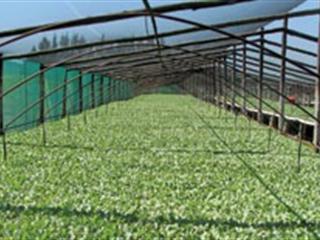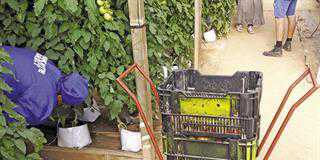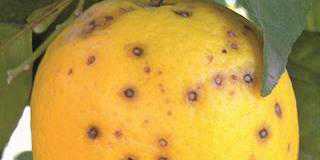
Before embarking on a fertiliser programme, it’s critical to check the acidity of the soil. At a pH of between 5,6 and 6,4, all essential nutrient elements are readily available. A pH outside this range compromises plant nutrient availability and the fertiliser programme will not yield the desired results.
This is the advice of Gromor consultant Rolf Hagen, who addressed farmers at the recent East Coast Intensive Horticultural Symposium at Cedara. “A relationship exists between soil acidity on the one hand and soil micro-organic activity, coupled with plant nutrient availability, on the other,” he says.
“Even when soil contains an abundance of plant nutrients, the uptake of macro-elements such as phosphate, magnesium, potassium, and micro- elements, particularly molybdenum and boron, is severely affected at a pH below 5,6.” He explains that there are two popular measures of soil acidity: pH and acid saturation.

Rolf Hagen
“At an acid saturation level below 10, nutrients are readily available. Between 10 and 20, acidity starts causing problems that require prompt countermeasures such as liming and soil organic matter conservation. When acid saturation exceeds 20, you have a problem and are not likely to achieve the desired result from a fertiliser programme. Drastic counter-measures such as heavy liming and deep ploughing may be necessary,” he advises.
If a soil acidity problem is suspected, subsoil acidity also needs to be checked. This requires taking soil samples at depths of 15cm to 30cm and 30cm to 45cm. “Standard liming to a depth of 15cm will not address subsoil acidity, as calcium does not leach down the soil profile. Rather prevent subsoil acidity by liming, protecting organic matter and avoiding heavy nitrogen dressings,” says Hagen.
Nitrogen not taken up by the plant roots or micro-organisms supported by organic matter in the soil will leach down the soil profile and acidify the subsoil. “If subsoil acidity has already become a problem, conservation measures such as no-till will help, but heavy liming and deep ploughing will probably be necessary,” explains Hagen. “The problem with subsoil acidity is that roots will not readily penetrate the subsoil, limiting access to nutrients and water, particularly during drought.”
Conserving soil organic matter is vital for long-term success. “It’s essential for humus, which supports soil life and has a high cation exchange capacity, facilitating the storage of plant nutrients and making them available to plants as required,” he stresses. The importance of taking care of soil organic matter is illustrated by the burn versus trash trials of the South African Sugarcane Research Institute. Running at Mount Edgecombe since 1939, the trials leave the sugar cane tops in the land after cutting, as opposed to burning them.
“Over 70 years – until 2009 – trashing the sugar cane lands instead of burning them produced an annual average advantage of 9t cane/ha,” explains Hagen. “It also resulted in better rainfall penetration, saving about 9mm of rainfall per year. “The trashed lands sustained yields without fertiliser for 18 years and, after 70 years, are still producing 40t cane/ha annually. In the trashed lands, the soil temperature in July at a depth of 50mm was 2°C higher than in the burnt plots.”
The trashed lands also benefited macro-elements. With potassium and silicon being stored in the leaves rather than in the stalks, these elements were maintained in the soil in the trashed lands. Calcium and magnesium levels in the trashed lands declined on a par with those in the burnt plots, but soil acidity was much higher in the burnt plots.
A growing medium
Plants grown intensively in a growing medium have a similar reaction to acidity as plants in soil. The inherent acidity of the medium is, however, of less importance than the effect of the acidity of the nutrient solution. “One should regularly check the pH and electrical conductivity of the water used in the nutrient solution,” advises Hagen. “If the pH of this water is above 6,4, add acid (for example, 125ml nitric acid per 1 000l water), otherwise flocculation will make the nutrients unavailable to plants.”
If the electrical conductivity exceeds 1,2 dS/m, the water is contaminated, usually with sodium and sodium chloride. This, explains Hagen, is likely to affect the availability of nutrients added to the nutrient solution. “Seedlings are sensitive to high pH, and this can be a problem when they are grown in improperly composted material or irrigated with unsuitable water,” he concludes.
Contact Gromor on 031 782 3105 or email [email protected]













